An American Risorigmento Part 2: A Red World HOI4 (Slightly Modified) RCAS AAR
Game: Hearts of Iron IV
Published: 2017-10-17, edited: 2018-05-27
Part of the campaign:
An American Risorigmento

With the massive industrial base of America's Rust Belt combined with the nation's historical centers, the Republic of Confederate American States stood as a potential unifier of the divided nation, as well as a brutal one.
However, there was still a long road in unifying the country.
The RCAS's army is still as small as it was before the war with the American People's Commonwealth. Despite the massive near-miraculous boom in both population and industrial prowess, it still takes time for the Minutemen to train new recruits and for the unions to actually produce the equipment needed, especially for the sort of highly mechanized army that the militiamen sought to create.
However, there was still a long road in unifying the country.
The RCAS's army is still as small as it was before the war with the American People's Commonwealth. Despite the massive near-miraculous boom in both population and industrial prowess, it still takes time for the Minutemen to train new recruits and for the unions to actually produce the equipment needed, especially for the sort of highly mechanized army that the militiamen sought to create.
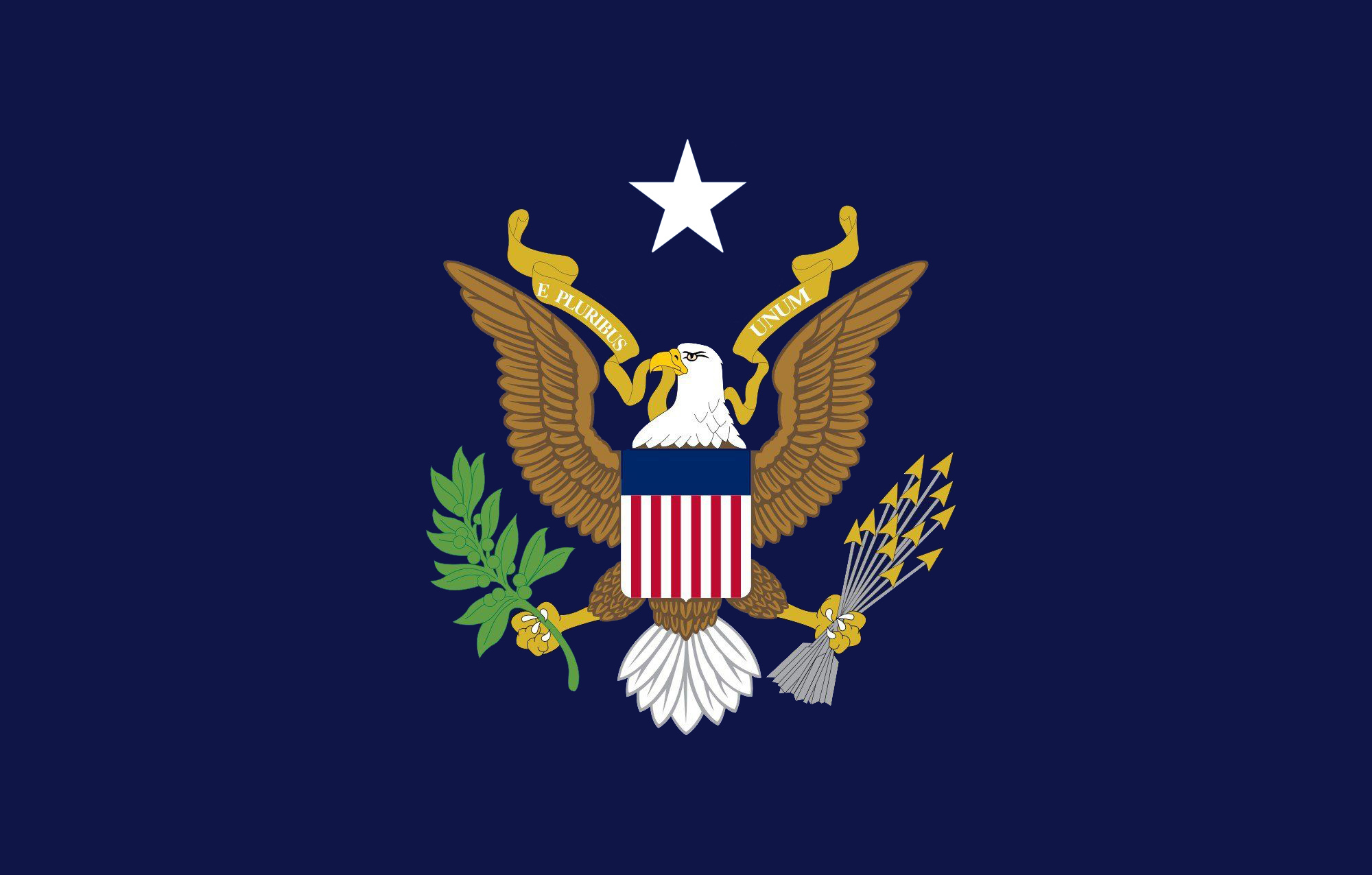
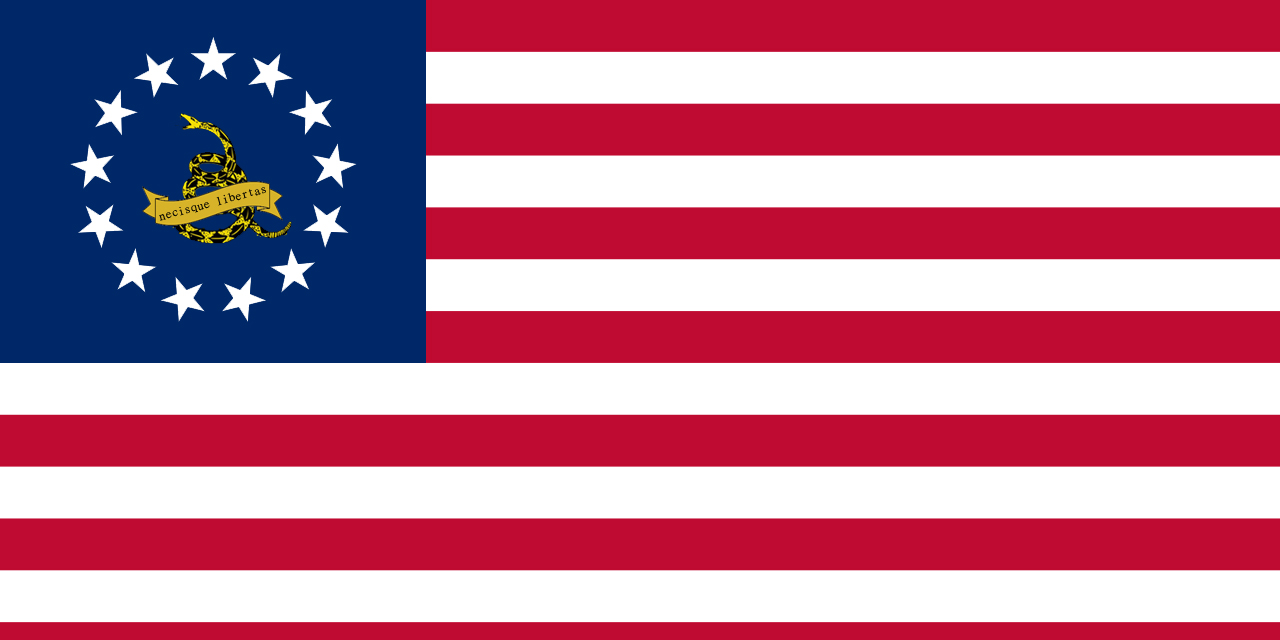
The American Republic has undergone a sharp political transformation during 2010 and early 2011. The long-lasting regime of the increasingly radicalized Republicans under Rumsfeld gave way to the moderate Conservative-Constitutionalist rule of the Independence Union Party. The flag of the new IUP regime, initially made to signal a return to old Constitutionalist principles, was criticized, especially by the Republicans, for resembling the RCAS flag due to sharing the same basic Betsy Ross design. (In fact, a proposed flag of the RCAS during its founding even had the Gadsden snake on the Betsy Ross flag.)
This only highlighted the common American heritage of the North and South. In fact, many members of the National Renewal Party and the Ku Klux Klan have spoken in support of the RCAS, and even the new flag, and publicly advocated for the absorption of the American Republic into the newly established confederacy. David Duke himself took a "centrist" position on the issue, instead advocating for a unification that would preserve both the RCAS and the American Republic as subunits of an unified American government. The IUP and GOP, obviously, both fervently oppose the RCAS and seek to eventually eliminate it.
The sizable number of mostly African American refugees who fled to the South in a reverse Great Migration contributed both to the rise of the IUP and extra animosity towards the far more extremist republic to the North, especially amongst the upper classes.
This only highlighted the common American heritage of the North and South. In fact, many members of the National Renewal Party and the Ku Klux Klan have spoken in support of the RCAS, and even the new flag, and publicly advocated for the absorption of the American Republic into the newly established confederacy. David Duke himself took a "centrist" position on the issue, instead advocating for a unification that would preserve both the RCAS and the American Republic as subunits of an unified American government. The IUP and GOP, obviously, both fervently oppose the RCAS and seek to eventually eliminate it.
The sizable number of mostly African American refugees who fled to the South in a reverse Great Migration contributed both to the rise of the IUP and extra animosity towards the far more extremist republic to the North, especially amongst the upper classes.
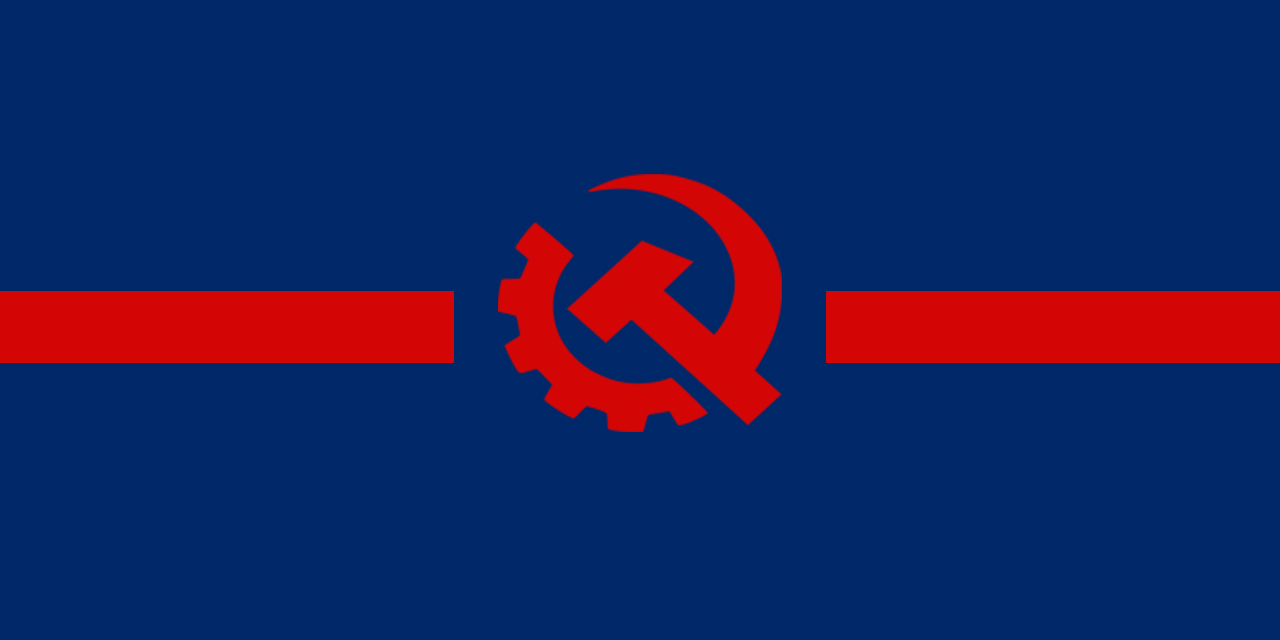
Meanwhile, the UAPR, the communist state of the West Coast, stood as a complete, unrelenting enemy to both the RCAS and the American Republic. Special hatred was placed on the RCAS, which represented the complete opposite of the counterculture values that the UAPR was founded on. Angela Davis offered the UAPR as a sanctuary for African-Americans and other racial minorities from Northern Confederate terror as entire communities were deported from the inner cities of the North.
However, the RCAS's sights, due to the still small size of its army, were not targeted on either of the major American successor states, but rather on the weak secessionist states that lack either protective alliances, an industrial base, or a sizable army. This is especially important as the IUP campaigned on the platform of reversing the hostile annexationist policy of the GOP towards those states, which could potentially lead to the entire West being part of an American Republic led alliance.
And thus, the sights of the radical revolutionaries were set on the Plains States of the Midwest Union.
However, the RCAS's sights, due to the still small size of its army, were not targeted on either of the major American successor states, but rather on the weak secessionist states that lack either protective alliances, an industrial base, or a sizable army. This is especially important as the IUP campaigned on the platform of reversing the hostile annexationist policy of the GOP towards those states, which could potentially lead to the entire West being part of an American Republic led alliance.
And thus, the sights of the radical revolutionaries were set on the Plains States of the Midwest Union.
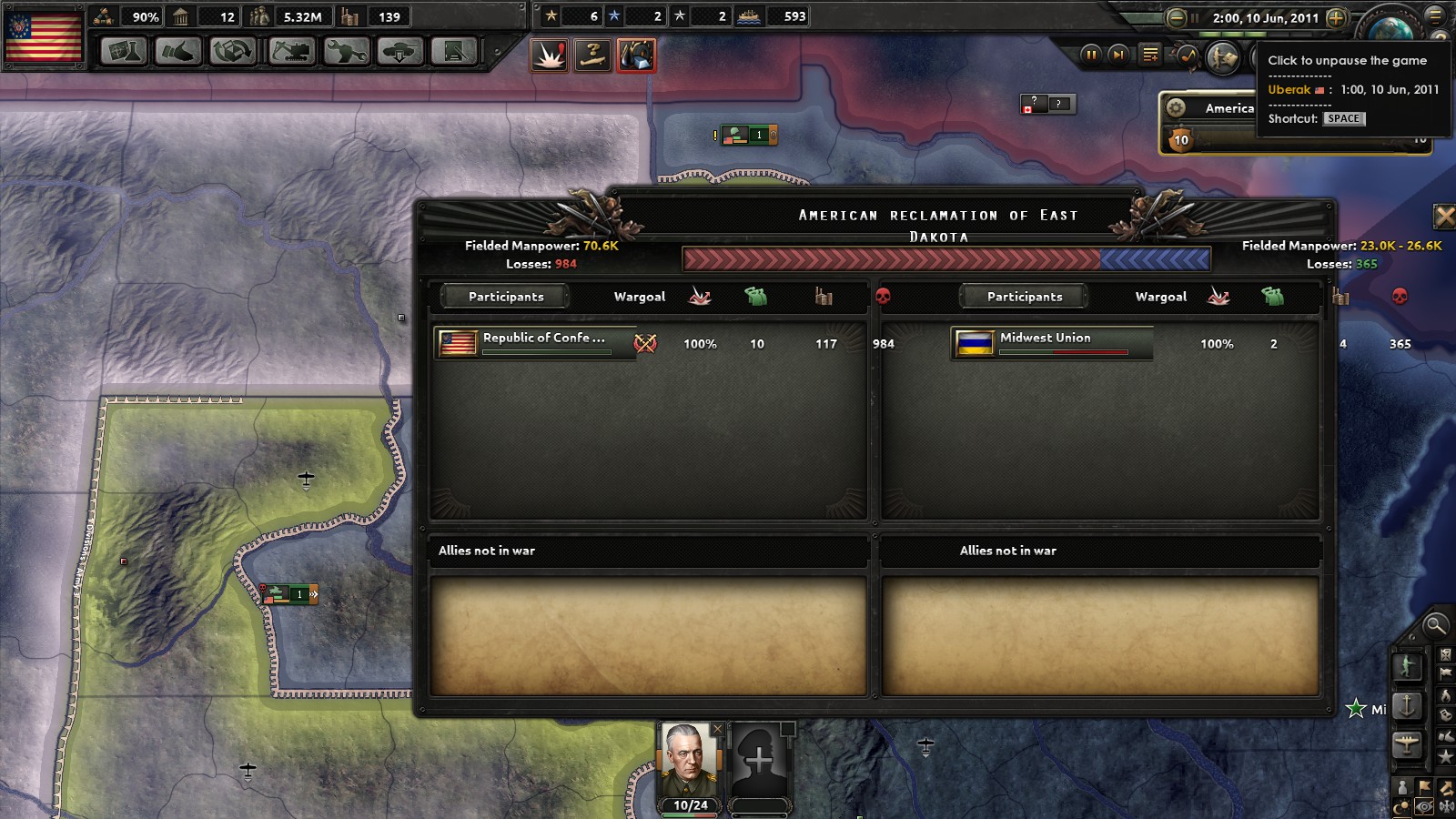
It would only be less than a month after the Northeastern Civil War that the Midwestern Unification War would be declared by the RCAS.
Immediately, the Midwest Union's lines were battered by the advance of RCAS tanks and mechanized/motorized infantry. Initially for a few hours or perhaps, they held the lines enough to inflict meager casualties on the advancing Americans, who were recklessly aggressive following the staggering victory from the previous month.
However, the Midwest Union's army simply wasn't big enough to reinforce their expansive lines, and their numbers were still dwarfed by the RCAS, despite the latter army being in its infancy. Their units were also not nearly well-equipped enough to deal with the sizable number of tanks that the RCAS had. The most crippling weakness of the Midwest Union was the the lack of mobility in its forces, which allowed the American revolutionaries to encircle and bypass their units.
Immediately, the Midwest Union's lines were battered by the advance of RCAS tanks and mechanized/motorized infantry. Initially for a few hours or perhaps, they held the lines enough to inflict meager casualties on the advancing Americans, who were recklessly aggressive following the staggering victory from the previous month.
However, the Midwest Union's army simply wasn't big enough to reinforce their expansive lines, and their numbers were still dwarfed by the RCAS, despite the latter army being in its infancy. Their units were also not nearly well-equipped enough to deal with the sizable number of tanks that the RCAS had. The most crippling weakness of the Midwest Union was the the lack of mobility in its forces, which allowed the American revolutionaries to encircle and bypass their units.
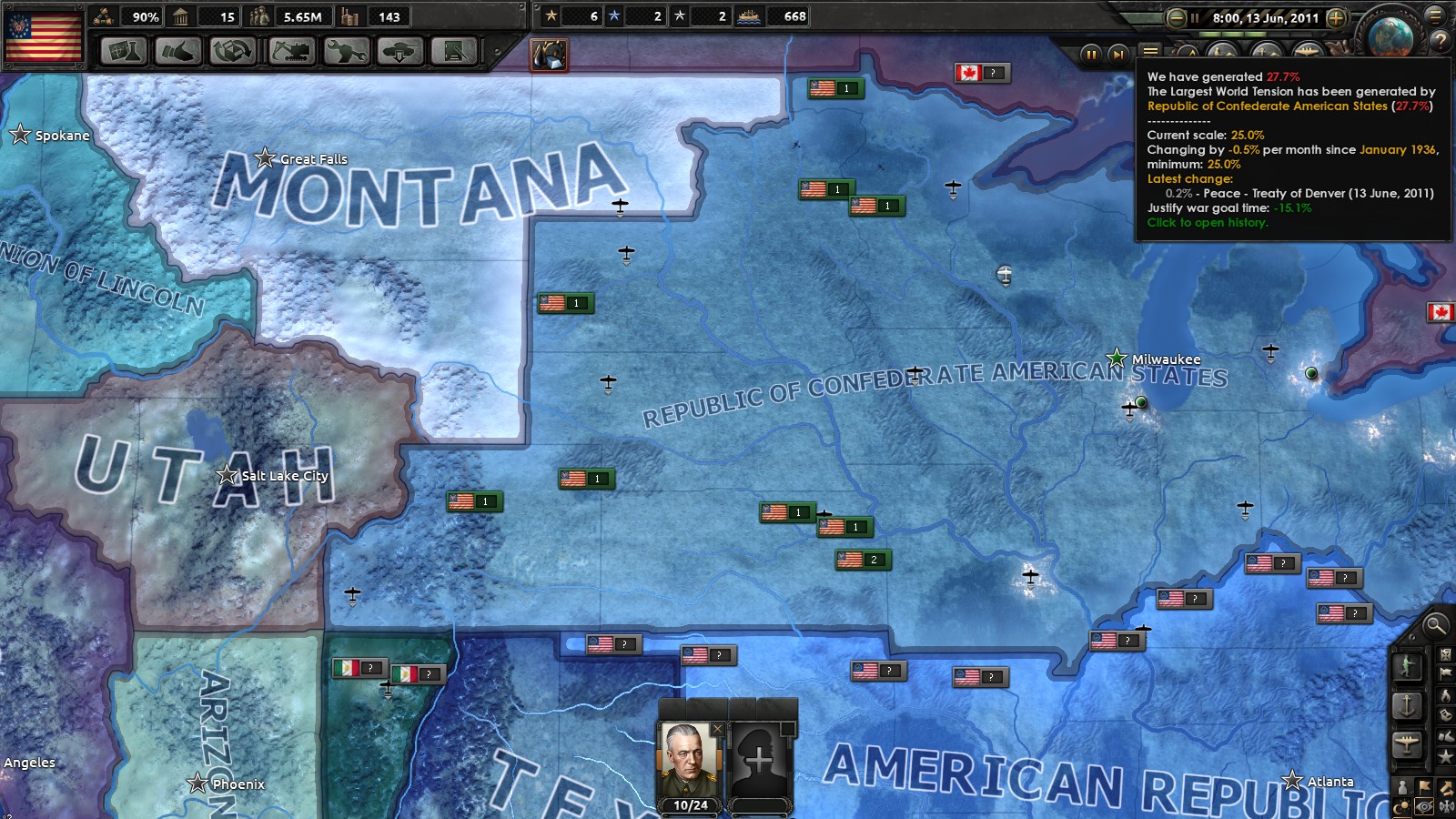
Within a week, the Midwest Union was annexed into the Republic of Confederate American States.
The local population were quickly admitted into the Union as citizens of their respective states. In a stark contrast to the brutality faced by urban minorities in the cities, the rural Midwestern farmers were treated as equals and were even invited into the militia. Locals with patriotic sentiments quickly joined the Minutemen with their celebrations, immediately declaring themselves American citizens.
A new breath of democratic life returned to the Great Plains as local governments were replaced with town hall meetings. The festivities taken after the liberation were a colossal celebration of Jeffersonian virtues that were extolled by the small yeoman farmers of Middle America. Similar things happened in the rural and white-working class areas of the North following the Northeastern War with the APC, but there were no minority-populated inner cities for the Minutemen or local mobs to unleash their wrath upon.
However, the wealthier farmers and agribusinesses who strongly supported the Midwest Union found a very different fate for themselves. The National-Jeffersonians, true to their namesake, sought to create a Jeffersonian idyll in the American countryside, and the large-scale agribusiness corporations and even farmers who hired a sizable number of farmhands were both seen as corrupting and destructive influences on this ideal. The revolutionaries, unlike the old Jeffersonians, took this distrust in a radical direction, out right redistributing the lands of agribusiness into the hands of small property-owning farmers organized into cooperatives. New granges were formed, which expanded the ranks of agriculture in the Federated Trades Assembly. Existing cooperatives profited from the pro-agricultural RCAS policies, whilst the wealthy agribusiness owners found themselves often lynched or driven from the country by mobs of angry homesteaders, who often even had support from the Minutemen. A fate very similar to that of the college activists and intellectuals who found themselves hapless next to the wrath of the now vocal majority.
Another less savory aspect of the RCAS regime was its highly antireligious or, more accurately, anticlerical/antimoralistic stance, though this was handled more at the local level with most of the new states in the Great Plains opposing the establishment of the anti-religious laws that became prevalent in the Northeast. Despite the toleration towards even fundamentalist Christianity, many of the megachurches and evangelists who had supported the old Midwest Union regime faced lynchings or exile as the populace were turned against them. It was more the fear of established or organized religion influencing politics or withering away the civic virtues of the population that drove the "anti-religious" policy of the RCAS.
However, the Midwest Union was only one speed-bump on the Confederate Republic's path towards reunifying America, as former allies and ardent enemies lied on its warpath.
The local population were quickly admitted into the Union as citizens of their respective states. In a stark contrast to the brutality faced by urban minorities in the cities, the rural Midwestern farmers were treated as equals and were even invited into the militia. Locals with patriotic sentiments quickly joined the Minutemen with their celebrations, immediately declaring themselves American citizens.
A new breath of democratic life returned to the Great Plains as local governments were replaced with town hall meetings. The festivities taken after the liberation were a colossal celebration of Jeffersonian virtues that were extolled by the small yeoman farmers of Middle America. Similar things happened in the rural and white-working class areas of the North following the Northeastern War with the APC, but there were no minority-populated inner cities for the Minutemen or local mobs to unleash their wrath upon.
However, the wealthier farmers and agribusinesses who strongly supported the Midwest Union found a very different fate for themselves. The National-Jeffersonians, true to their namesake, sought to create a Jeffersonian idyll in the American countryside, and the large-scale agribusiness corporations and even farmers who hired a sizable number of farmhands were both seen as corrupting and destructive influences on this ideal. The revolutionaries, unlike the old Jeffersonians, took this distrust in a radical direction, out right redistributing the lands of agribusiness into the hands of small property-owning farmers organized into cooperatives. New granges were formed, which expanded the ranks of agriculture in the Federated Trades Assembly. Existing cooperatives profited from the pro-agricultural RCAS policies, whilst the wealthy agribusiness owners found themselves often lynched or driven from the country by mobs of angry homesteaders, who often even had support from the Minutemen. A fate very similar to that of the college activists and intellectuals who found themselves hapless next to the wrath of the now vocal majority.
Another less savory aspect of the RCAS regime was its highly antireligious or, more accurately, anticlerical/antimoralistic stance, though this was handled more at the local level with most of the new states in the Great Plains opposing the establishment of the anti-religious laws that became prevalent in the Northeast. Despite the toleration towards even fundamentalist Christianity, many of the megachurches and evangelists who had supported the old Midwest Union regime faced lynchings or exile as the populace were turned against them. It was more the fear of established or organized religion influencing politics or withering away the civic virtues of the population that drove the "anti-religious" policy of the RCAS.
However, the Midwest Union was only one speed-bump on the Confederate Republic's path towards reunifying America, as former allies and ardent enemies lied on its warpath.



